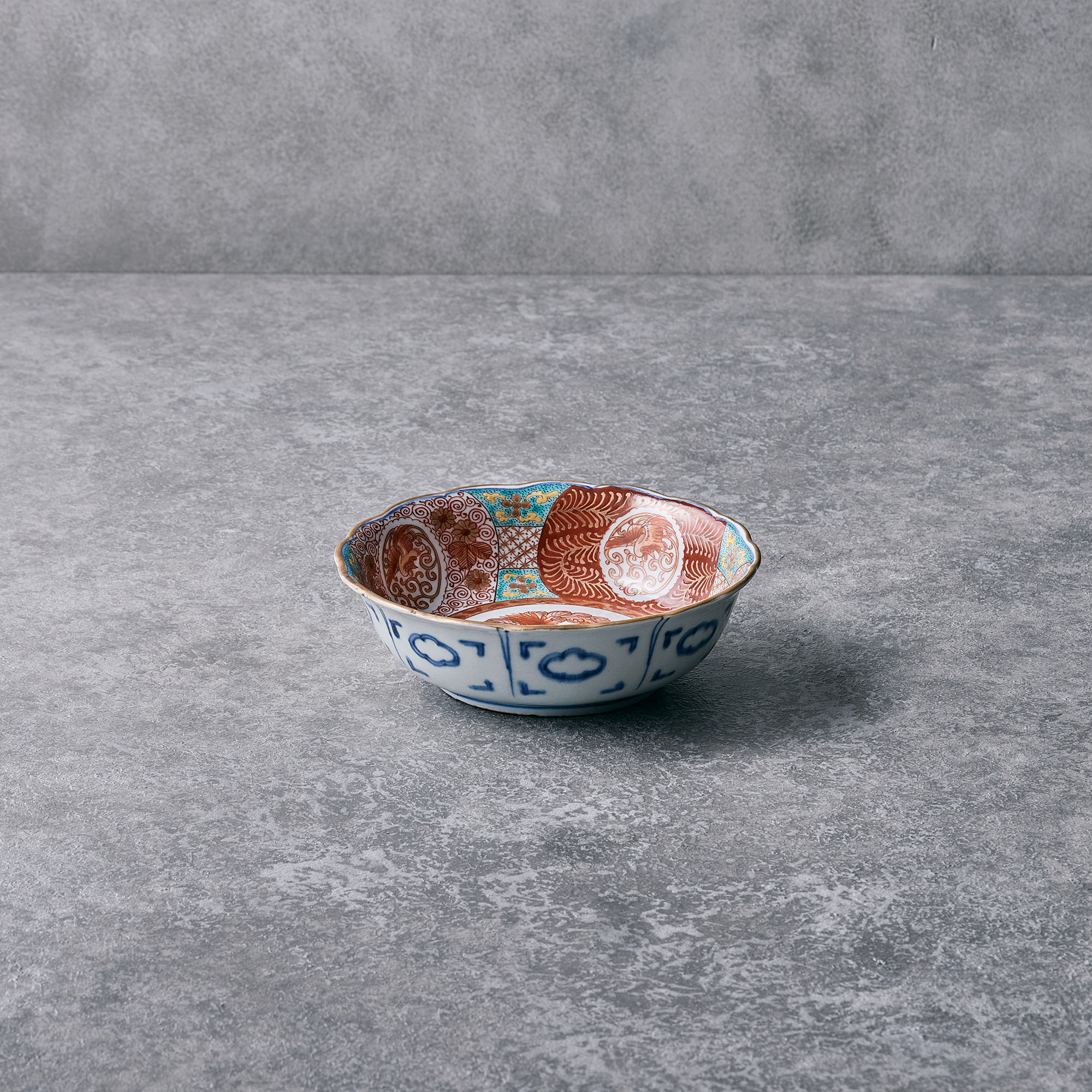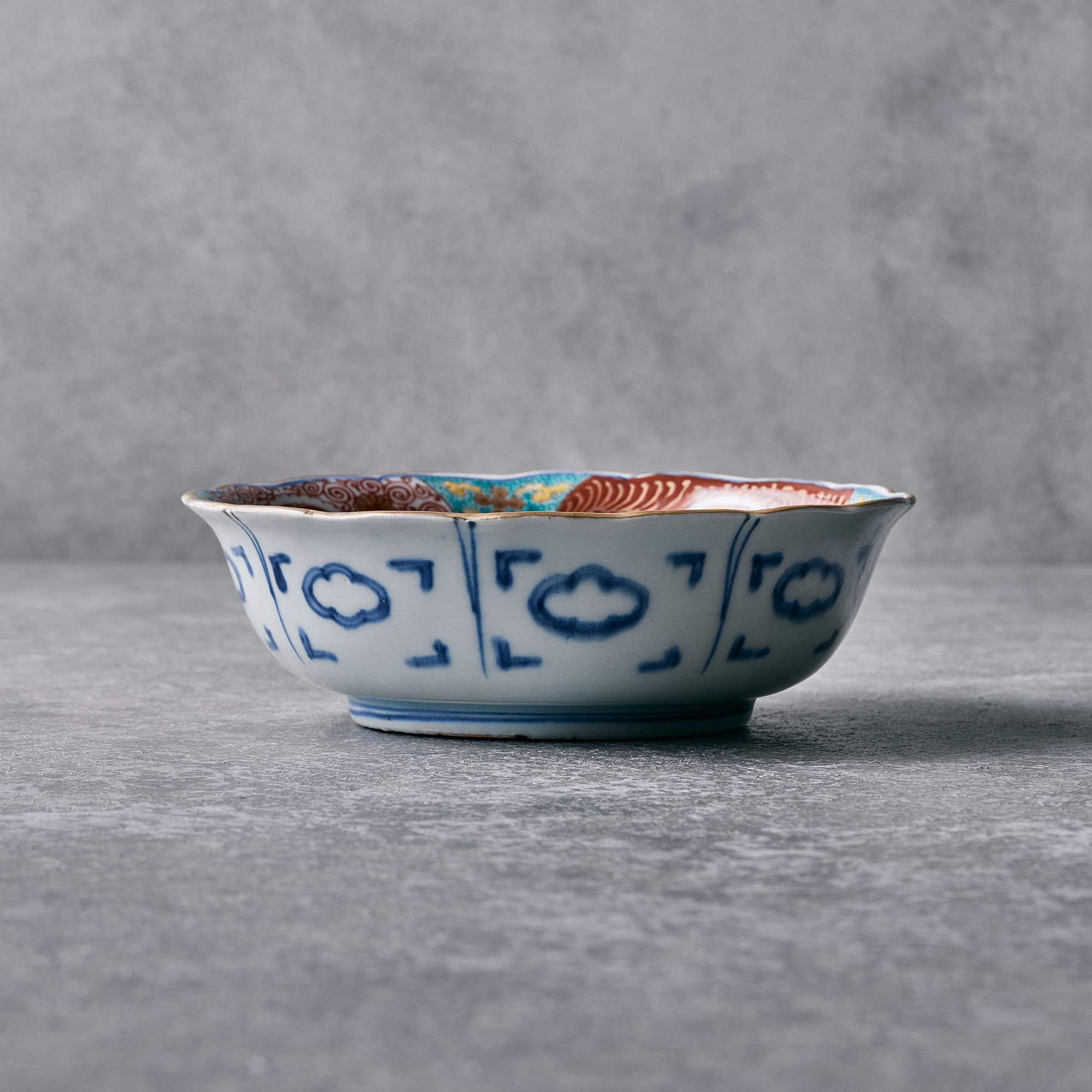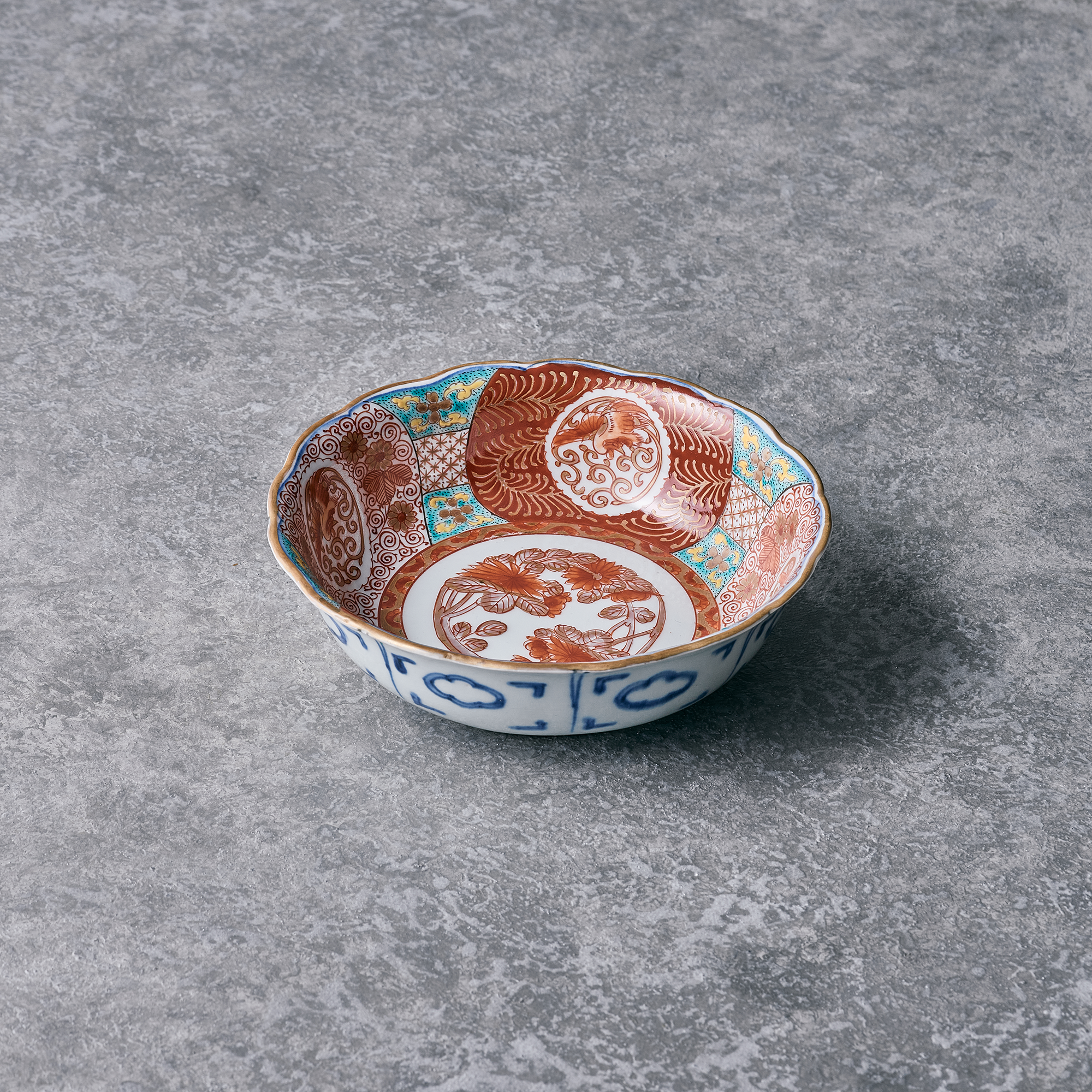



IMARI WARE PHOENIX /ARABESQUE PATTERN BLOWL Φ6.69 x H2.16in
BRAND: IMARIYAKI
<PRODUCT DETAILS>
Size:Φ170xH55mm / Φ6.69xH2.16in
Weight:360g / 0.8lb
Material : Porcelain
Product NO:9884-599-0106-2900
Origin : Made in Japan
<Precautions for use>
Iron, sticking, kiln scratches, pinholes, and age that form in the kiln during firing.
The glaze may fade due to The same craftsman does not paint the same pattern.
In addition, because each piece is hand-painted, the color, size of the pattern, and pattern varies from piece to piece, so each piece is unique.
There is no such thing as a "one-size-fits-all" vessel. The size of vessels can vary by millimeters depending on the technology of the time.
<BUYER'S RECOMMENDATION>
A beautifully color-coordinated namasu dish.
Not only is it gorgeous, but it is also a point of reference for the white-out of the phoenixes on the sheep's tooth and octopus arabesques, and the coloring of the golden flowers on the green and yellow leaves of the tachiyuwaku.
It is also deep enough to be used as a main dish.
It is available for use.
Not only is it gorgeous, but it is also a point of reference for the white-out of the phoenixes on the sheep's tooth and octopus arabesques, and the coloring of the golden flowers on the green and yellow leaves of the tachiyuwaku.
It is also deep enough to be used as a main dish.
It is available for use.
<BRAND RELEASE>
There is a theory that Imariyaki was the first glazed porcelain to be produced.
This was the first porcelain in Japan.
The pottery was fired in what is now Arita, Saga Prefecture, and shipped from the nearby port of Imari to the rest of the country.
The name "Imariyaki" was given to this type of pottery because of its large size. Prior to that, Japanese pottery such as Bizen ware
The pottery was unglazed and earth-colored, but compared to ceramics, porcelain was more durable in the kiln than pottery.
It is a very strong pottery compared to ceramics because it can be fired at a higher temperature inside.
Porcelain became the most valuable tableware of the period. Porcelain was initially used for export
The high technology used in the production of these items was limited to a few wealthy individuals, such as feudal lords, and was only available to a limited number of people in Japan.
However, as the restaurant industry flourished, it became popular in the daily lives of the general public.
Because of the increased demand for porcelain, Imari alone was no longer sufficient,
Pottery similar to Imariyaki began to be produced in local kilns in the region.
Imariyaki is used for a wide range of purposes, from tableware for general household use to
The pottery has become world-famous and is now considered to be a work of art.
There is a theory that Imariyaki was the first glazed porcelain to be produced.
This was the first porcelain in Japan.
The pottery was fired in what is now Arita, Saga Prefecture, and shipped from the nearby port of Imari to the rest of the country.
The name "Imariyaki" was given to this type of pottery because of its large size. Prior to that, Japanese pottery such as Bizen ware
The pottery was unglazed and earth-colored, but compared to ceramics, porcelain was more durable in the kiln than pottery.
It is a very strong pottery compared to ceramics because it can be fired at a higher temperature inside.
Porcelain became the most valuable tableware of the period. Porcelain was initially used for export
The high technology used in the production of these items was limited to a few wealthy individuals, such as feudal lords, and was only available to a limited number of people in Japan.
However, as the restaurant industry flourished, it became popular in the daily lives of the general public.
Because of the increased demand for porcelain, Imari alone was no longer sufficient,
Pottery similar to Imariyaki began to be produced in local kilns in the region.
Imariyaki is used for a wide range of purposes, from tableware for general household use to
The pottery has become world-famous and is now considered to be a work of art.
Choose options




IMARI WARE PHOENIX /ARABESQUE PATTERN BLOWL Φ6.69 x H2.16in
Sale price26 900 XPF

